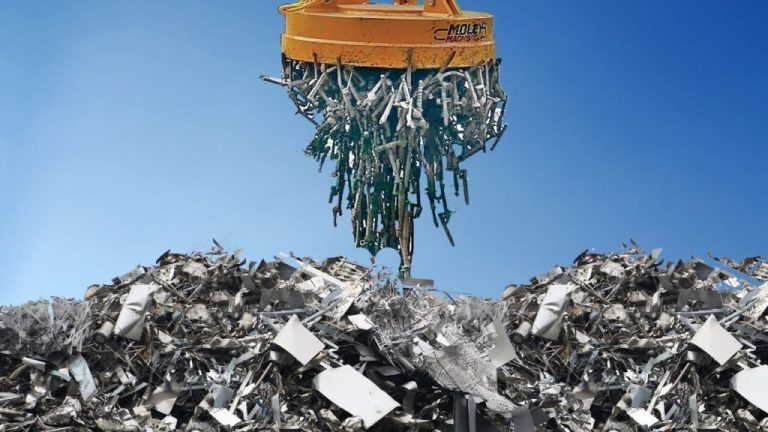In industries that rely on metal resources, understanding pricing mechanisms is crucial to making informed decisions. One such pricing element is the scrap premium. Whether you’re a manufacturer, recycler, or investor, knowing how the scrap premium affects costs and value is essential for navigating markets effectively. In this article, we’ll break down what the scrap premium is, why it matters, and how it impacts the broader economy.
What is Scrap Premium?
The scrap premium refers to the additional amount added to the base price of recycled materials, particularly metals. This premium often varies according to several market factors, including demand, supply constraints, and quality of the scrap metal. For example, high-grade scrap aluminum may carry a different premium compared to low-grade scrap, reflecting the quality and purity of the metal content. Essentially, the scrap premium (Skrotpræmie) is the surcharge that reflects the economic forces in play and can change depending on market dynamics.
In some cases, scrap metal buyers negotiate premiums based on the geographic location of the metal or the logistical costs associated with its transportation. This added layer of cost is a response to the complexities of acquiring, processing, and distributing recycled metals efficiently.
Why Does the Scrap Premium Matter?
The scrap premium has significant implications for industries that rely on recycled metals, from automotive to construction. Here are several reasons why it matters:
- Cost Implications
For manufacturers, the scrap premium directly influences production costs. Higher scrap premiums lead to increased expenses for companies relying on recycled metals, which can result in higher prices for end consumers. By tracking the scrap premium, companies can better anticipate cost fluctuations and adjust their pricing strategies accordingly. - Market Dynamics
The scrap premium is an indicator of supply and demand in the metals market. When the premium is high, it suggests that there may be a shortage of readily available scrap metal, possibly due to increased global demand. Conversely, a lower premium could mean an oversupply of scrap metal. This information helps industry players adjust their buying and selling strategies, sometimes even opting to switch materials or sources if the premium becomes too burdensome. - Environmental and Regulatory Impacts
In many countries, regulations favor the use of recycled materials to reduce environmental impact. As such, the scrap premium can also reflect the economic incentive for recycling. High premiums can encourage more recycling efforts, as they improve the profitability of scrap collection and processing, aligning with green initiatives aimed at reducing waste and emissions. Governments and environmental organizations closely monitor these premiums to understand how recycling incentives impact industry behavior. - Investment Strategies
Investors in commodity markets often look at the scrap premium as a sign of profitability in the scrap metal sector. A rising scrap premium can indicate higher potential returns on investments in recycling facilities or in companies specializing in metal recovery. Likewise, sudden drops in the premium might signal lower profitability, prompting investors to adjust their portfolios accordingly. - Global Trade and Economics
In international trade, the scrap premium affects the competitiveness of metal-exporting and -importing countries. For instance, countries with lower scrap premiums can attract more international buyers, benefiting their economies. Meanwhile, countries with higher premiums may experience a decrease in competitiveness, impacting their trade balances and economic growth.
Factors Influencing Scrap Premium
The scrap premium fluctuates based on several factors:
- Quality of Scrap Metal: High-quality scrap commands a higher premium due to its purity and ease of processing.
- Geographic Factors: Local demand and transportation costs can also influence premiums, making certain locations more expensive for buyers.
- Supply and Demand Dynamics: When demand outstrips supply, premiums rise, as buyers are willing to pay more for limited resources.
- Regulatory Incentives: Countries that offer incentives for recycling may experience variations in premiums, as more or fewer recyclers enter the market based on economic viability.
How to Track Scrap Premium Trends
Monitoring the scrap premium can provide valuable insights for industry professionals. Common ways to track these trends include:
- Industry Reports: Companies and investors rely on reports that analyze scrap metal markets and premiums, highlighting any shifts or patterns that may affect the industry.
- Price Indices: Specialized indices offer updated data on scrap metal prices and premiums, giving stakeholders the information they need to make informed buying and selling decisions.
- Supply Chain Partners: Working closely with suppliers and recyclers can help manufacturers stay ahead of fluctuations in the scrap premium, enabling them to adjust their sourcing strategies accordingly.
Conclusion
The scrap premium is a crucial factor in the world of recycled metals, impacting everything from production costs to global trade dynamics. Understanding its role in the industry helps manufacturers, investors, and governments make strategic decisions that align with market conditions. By monitoring the scrap premium, industry players can adapt to economic shifts, enhance their cost efficiencies, and ultimately gain a competitive edge in a complex and dynamic market.
For anyone involved in the recycled metals industry, grasping the importance of the scrap premium is a key step towards achieving sustainable success.

